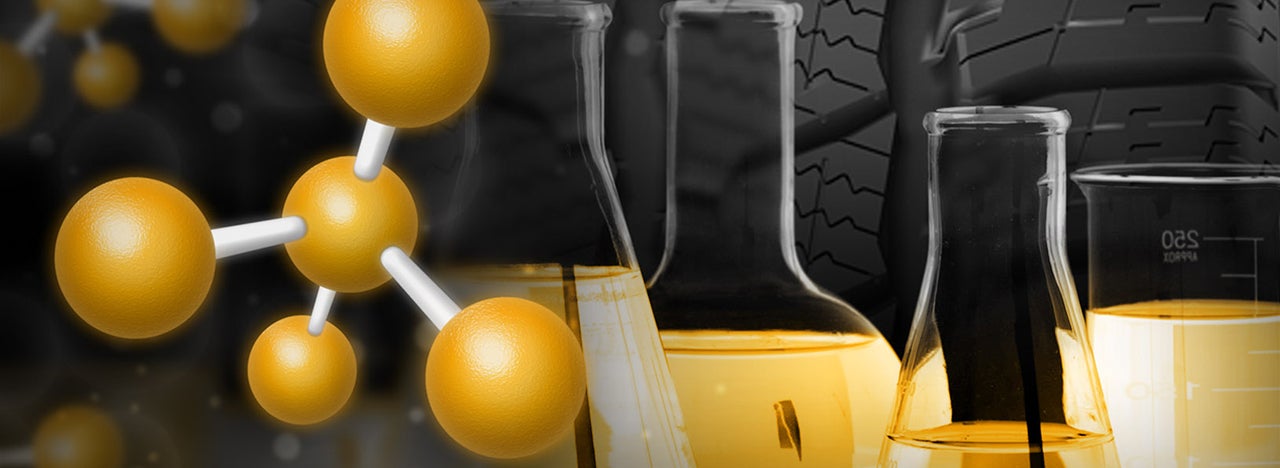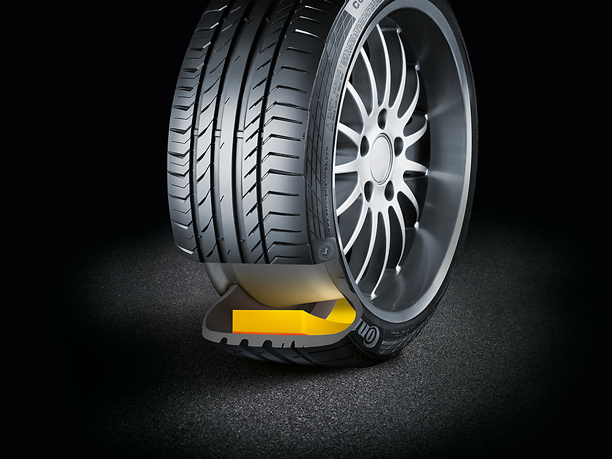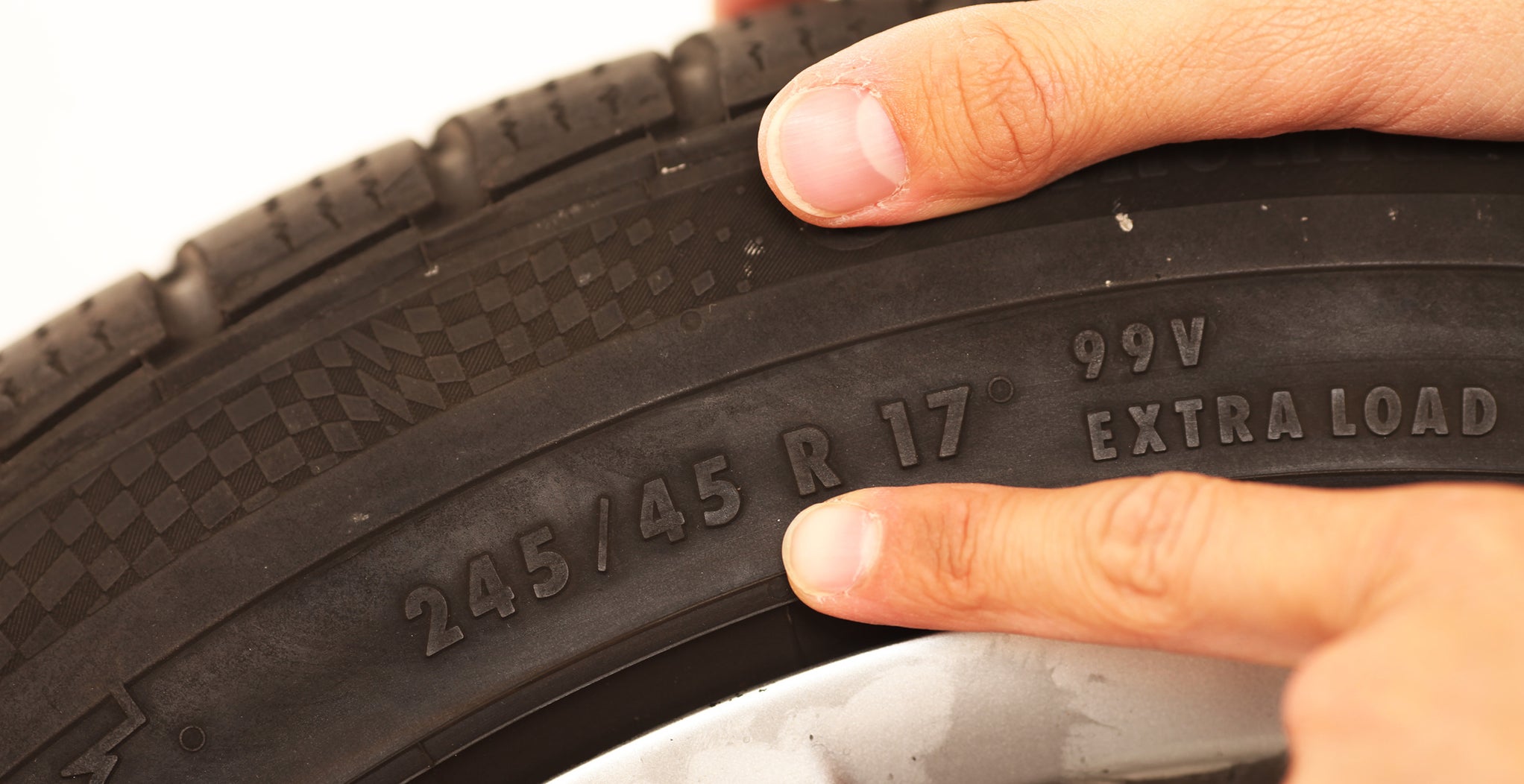
# Tyre Basics
Tyre mixture
What’s in your tyres?
It's easy to take your tyres for granted, but that black ring on the wheel of your car contains so much more than just plain rubber. In actual fact, it’s a complex blend of different rubbers – natural and synthetic – plus a whole host of other chemicals and construction materials. Expertly mixed and combined, our rubber compounds are sophisticated enough for a variety of driving conditions.
On average, a modern tyre on a passenger car will contain up to 25 components and as many as 12 different rubber compounds. It all starts with natural rubber extracted from special trees grown in large plantations. This liquid (latex) coagulates with acid, is cleaned with water and pressed into bales.
Synthetic rubber, meanwhile, is created in a separate process using a mix of chemicals in the laboratory. During the manufacturing stage, these bales (both natural and synthetic) are cut up, weighed and mixed with other ingredients according to precise recipes.

Follow the thread
The textile industry supplies base materials (rayon, nylon, polyester and aramid fibres) for the manufacture of cords that serve as a reinforcing material.

Steel for strength
The steel industry supplies high-strength steel. This serves as the raw material for the manufacture of steel belts (steel cord) and bead cores (steel wire).

A material for every component
We can break a tyre down into its components to see where each material comes in. Let’s start at the road surface and work our way inwards.
- Tread – natural and synthetic rubber
- Jointless cap plies – nylon, embedded in rubber
- Steel cord for belt plies – high-strength steel cords
- Textile cord ply – rubberised rayon or polyester
- Inner liner – butyl rubber
- Side wall – natural rubber
- Bead reinforcement – nylon or aramid
- Bead apex – synthetic rubber
- Bead core – steel wire embedded in rubber
By the numbers
We can also look at amounts of materials used. Let’s take a look at what’s in one of Continental’s most popular summer models.*
- Rubber (natural and synthetic) 41%
- Fillers (carbon black, silica, carbon, chalk…) 30%
- Reinforcing materials (steel, polyester, rayon, nylon) 15%
- Plasticisers (oils and resins)¹ 6%
- Chemicals for vulcanisation (sulphur, zinc oxide…) 6%
- Anti-ageing agents and other chemicals 2%
Of course, a different compound of materials provides different properties for different tyres. The precise mix of ingredients matters.
Materials to suit the season
The mix of materials used in a tyre will depend on its purpose. The soft compounds in summer tyres become hard below 7 °C, compromising grip. But winter models offer special technology that keeps them flexible and helps maintain grip – ensuring top performance, even in low temperatures. Living in a mild climate? All-season tyres can provide an ideal solution.
Materials for quiet comfort
ContiSilent™ is a noise-reducing technology developed by Continental. It reduces interior noise on all road surfaces. How? ContiSilent™ tyres feature a polyurethane foam absorber attached to the inner surface of the tread area with an adhesive. Regardless of the temperature, the structure of the foam stays intact. Even at high speeds, the ContiSilent™ absorber reduces road noises inside the vehicle by up to 9 dB(A).

Tried, tested and guaranteed
Manufactured from only the highest quality materials, Continental sets high standards – particularly in safety. Before any Continental innovation goes into production, it is tested intensively. Testing is carried out on every winter and summer tyre. This is done under all kinds of weather and road surface conditions, using the most modern testing methods and measuring technology.
Every test follows one simple purpose: making driving safer.
* 205/55 R 16 91V ContiPremiumContact 5
¹ As of 2010 stringent mandatory limits are in effect in the EU explicitly for plasticisers classed as harmful to health. Thanks to the use of alternative types of oil, Continental tyres remain well below these limits.
Related content
-
 2022/09/02Tyre sizeThere are three things to know when buying new tyres for your car – the size, speed rating, and load index – and all this information is easy to find.Read more
2022/09/02Tyre sizeThere are three things to know when buying new tyres for your car – the size, speed rating, and load index – and all this information is easy to find.Read more -
 2022/09/02Tyre markingsMarkings on the tyre sidewall are shorthand for a wealth of information including the load index, speed rating, tyre size, construction, and more.Read more
2022/09/02Tyre markingsMarkings on the tyre sidewall are shorthand for a wealth of information including the load index, speed rating, tyre size, construction, and more.Read more